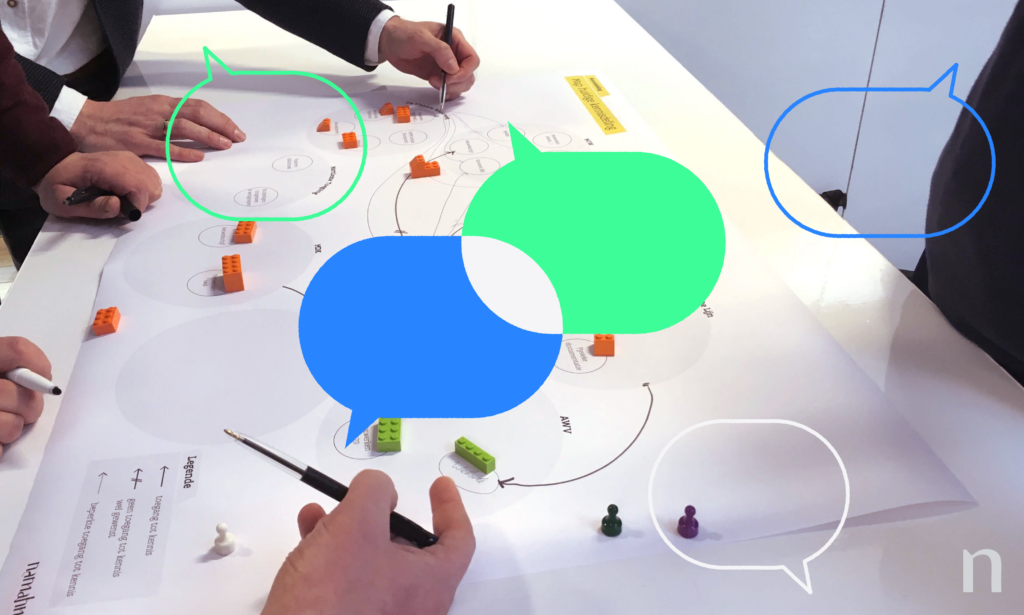Flemish government (Policy area of Mobility and Public Works)
A knowledge sharing platform for the Mobility and Public Works Policy Area of the Flemish Government

The Policy area of Mobility and Public Works of the Flemish Government wanted to improve and promote knowledge and information sharing among its divisions on infrastructural works. Namahn did a preparatory analysis, created the UI design and mapped out a governance plan for a new knowledge platform. Namahn also guided the developers in building the platform and helped the content owners prepare and migrate content to the new platform.
| Client | Sector | LAnguage | Team |
|---|---|---|---|
| Flemish government (Policy area of Mobility and Public Works) | Public | Dutch | Project manager & information architect, 1 lead designer |
Design challenge
The divisions working in the Mobility and Public Works Policy Area are quite diverse and can operate independently. There had been no incentives for or habits of sharing information and knowledge on the topic of infrastructural works regularly between them.
This independence was also reflected in the various technology landscapes within these divisions (Google, SharePoint, shared drives, self-developed web-based platforms and intranets running on different technologies). This meant there was no obvious technological option for a centralised knowledge-sharing platform. The one platform that had partially served this purpose, the “Info centre” of the Agency for Roads and Traffic, was running on end-of-life software and had recently been closed off to the other divisions.

This project’s main challenge was finding a common ground between the participating parties. To align their views on knowledge sharing, get them to set aside their reservations about changing their current way of working and have them invest in a shared platform.
Namahn has worked in The Policy area of Mobility and Public Works before. This longstanding collaboration helped us guide all stakeholders in developing a joint solution. (Reference/link to service catalogue case?)
Approach
Namahn took a co-creative approach early on, with several interactive workshops to build stakeholder consensus.
During the analysis phase, we started with a framing workshop, followed by a field study, interviewing engineers and information managers of the different divisions. We made an inventory of the current information systems. We used the “house of knowledge” metaphor better to grasp the different types of information and knowledge to include on the future platform and better understand the different purposes they serve. The analysis phase resulted, amongst other deliverables, in a first list of user requirements (prioritized as must-haves versus nice-to-haves) for the platform.
In the design phase, we set out an intuitive information architecture. We created a detailed design for the knowledge platform based on the style guidelines for Flemish government websites and applications (“Webuniversum”). We validated the resulting interactive prototype during usability tests. We also helped evaluate the different technology options and make a final choice for Drupal 8.
We proposed a governance model describing the roles and responsibilities for the management of the knowledge platform, both before and after the launch, and we prepared a migration plan for the project team, including a practical table to follow up on progress in the preparation and migration of the content.
In early 2020, DXC technology started the development of the platform in agile sprints. Namahn remained involved in the project, monitoring the development, adjusting the design where needed, and supervising content migration to the Drupal platform. We provided guidelines on how to write and structure knowledge pages and gave online training on this topic to all knowledge managers.

Result
The knowledge sharing platform for infrastructural works was launched in January 2021 during a “Go live webinar”, with 350 attendants (the maximum limit of a MS Teams meeting).
The final result is a platform with a mix of different types of information:
- A library of static information (procedures, guidelines, training material…).
- A list of links to other applications and platforms.
- A who’s who section to find experts on specific topics.
- Virtual communities, i.e. more informal groups to share ideas on certain topics.
- The possibility for each division to create its own “knowledge corner” is closed off to the other divisions.
The fact that the former “Info centre” of the Agency for Roads and Traffic was also migrated to the new platform and, in this way, opened up again to all divisions will provide a major boost to the platform’s success.